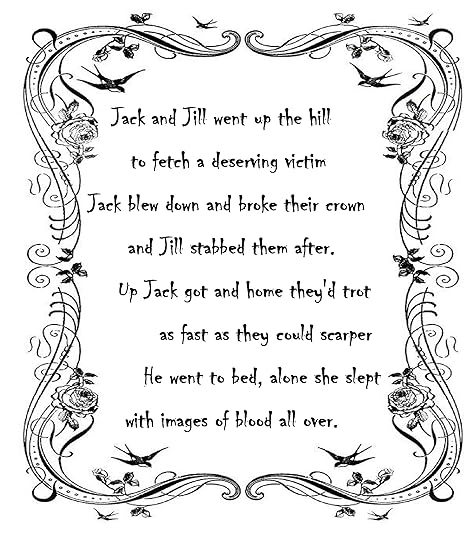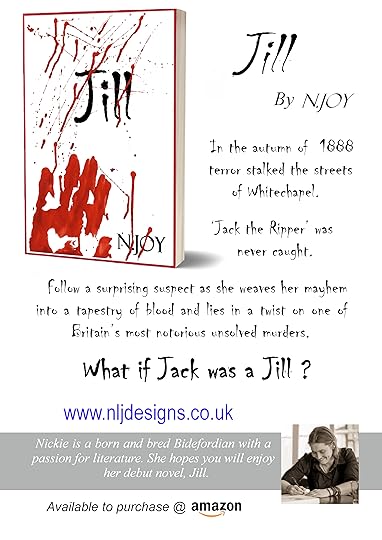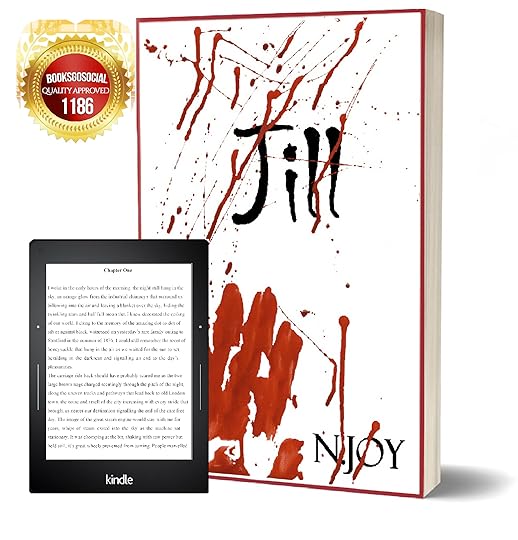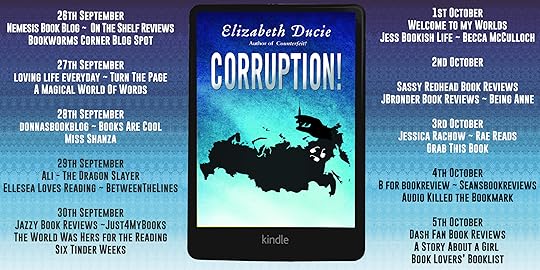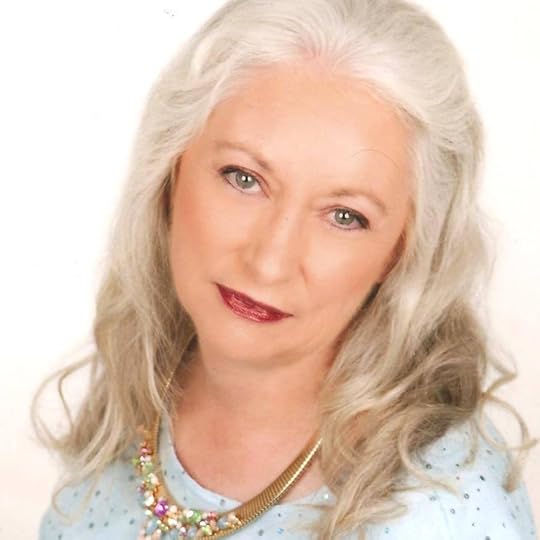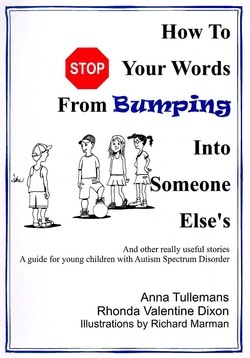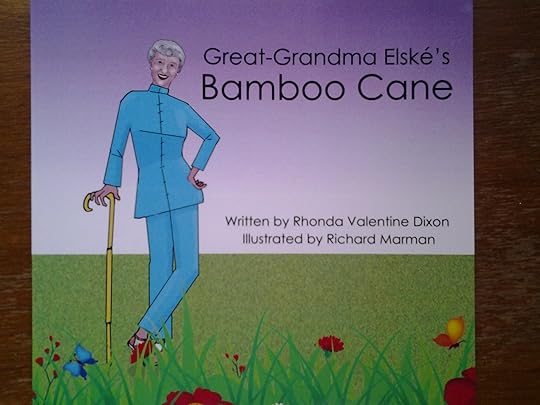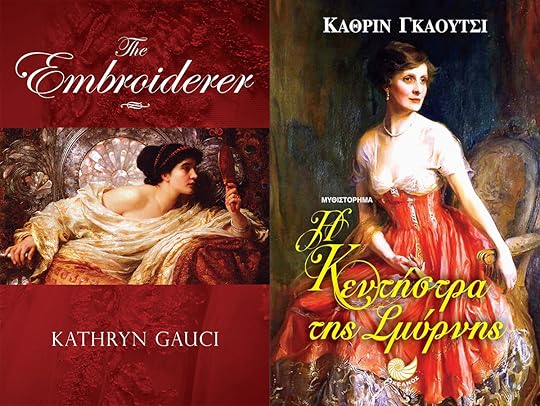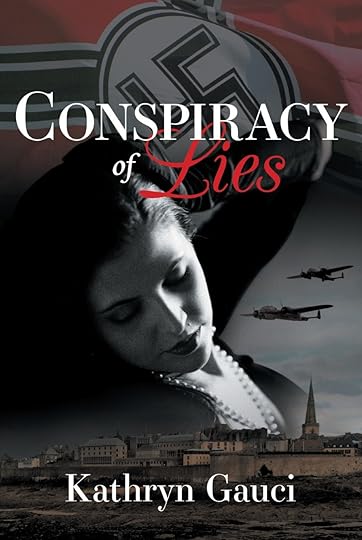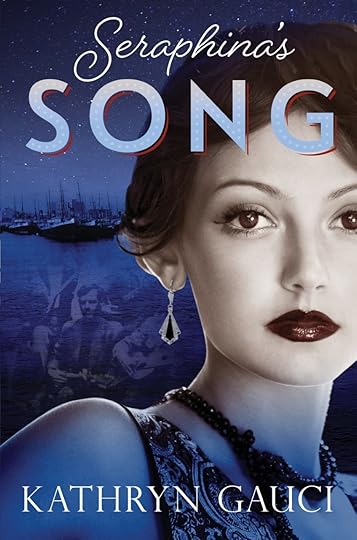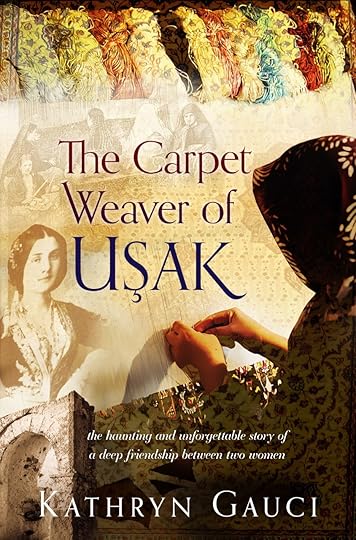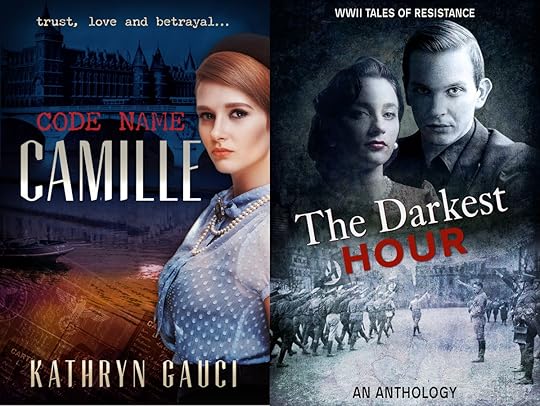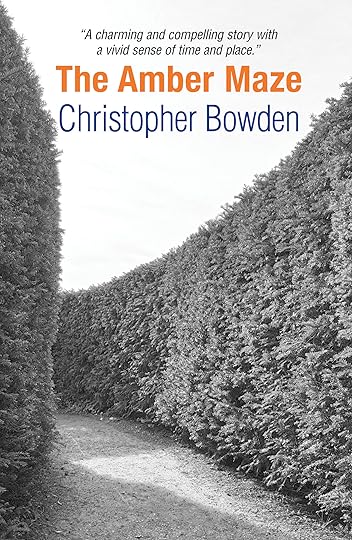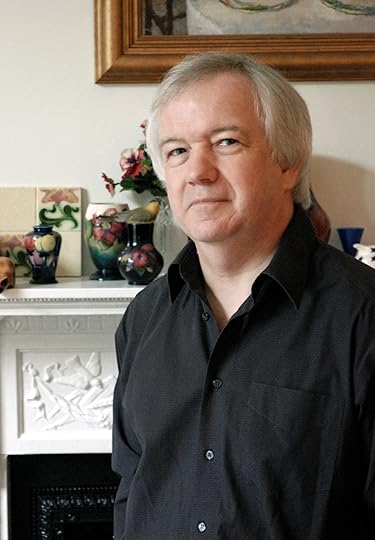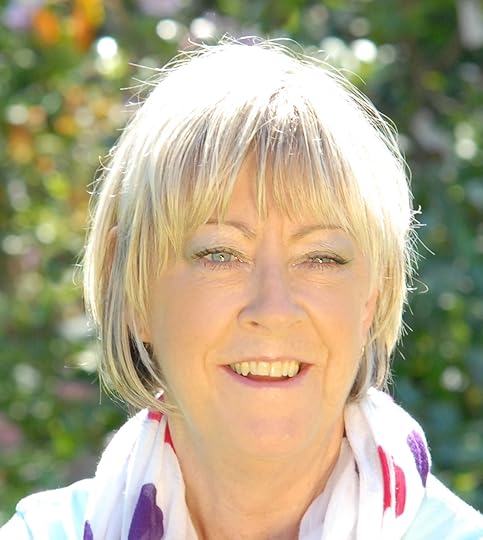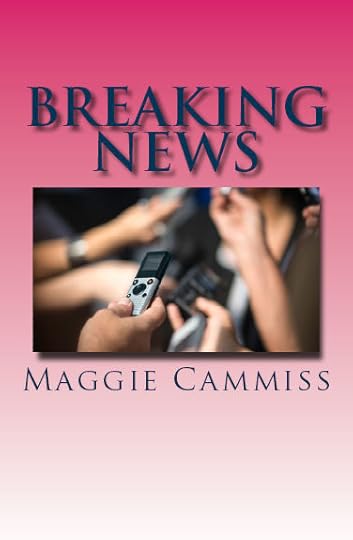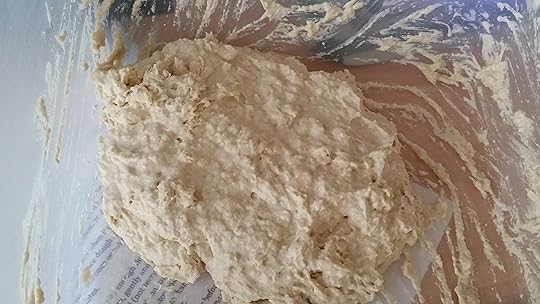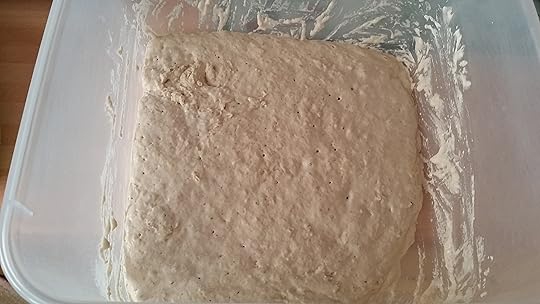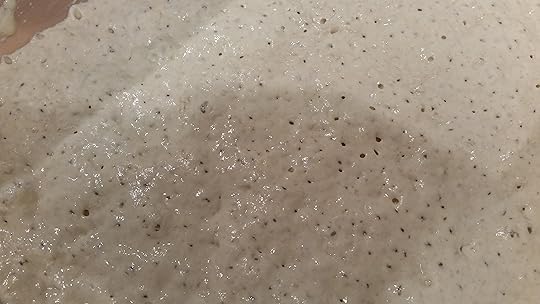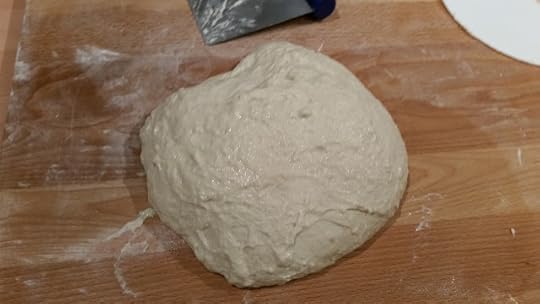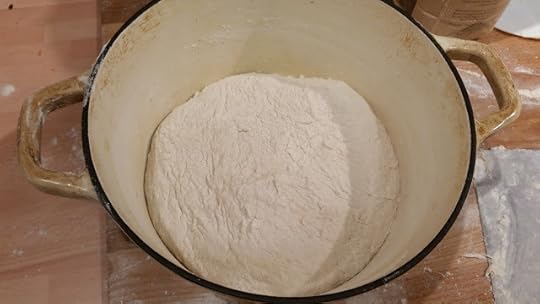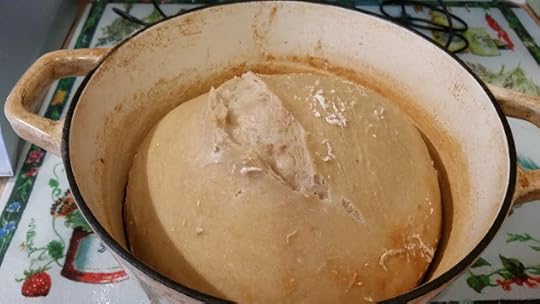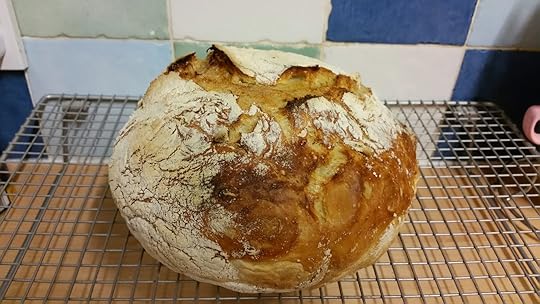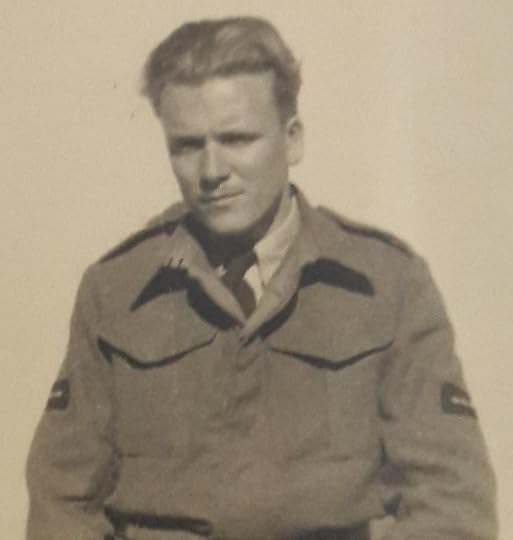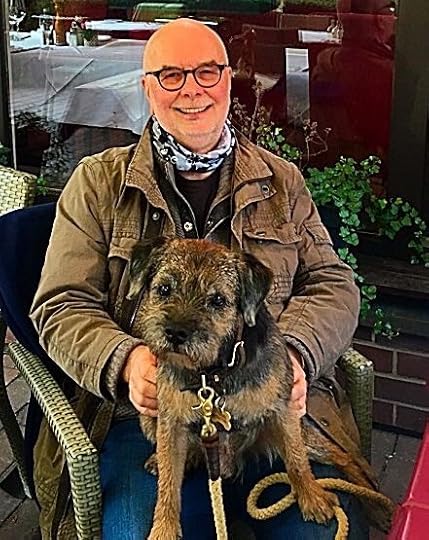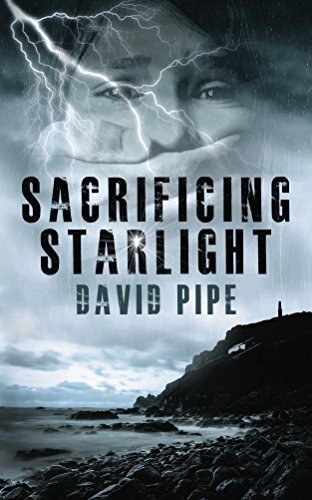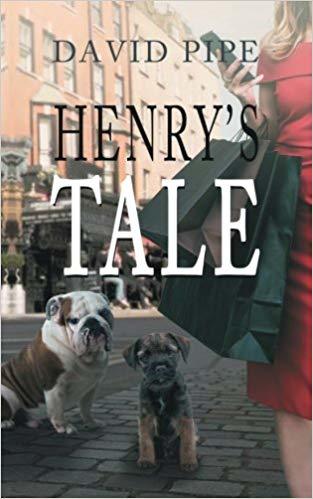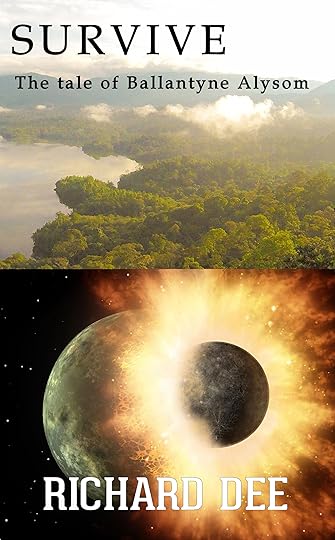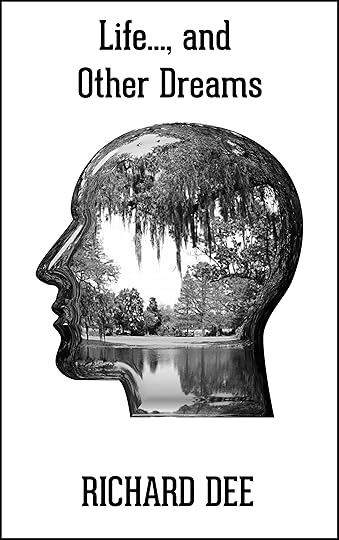Richard Dee's Blog, page 87
September 26, 2018
The Indie Showcase presents, Nickie Joy.
Hello All.
Let me start with an introduction or you’ll get to the end (if you get that far) thinking who is this nutter (meant in the nicest possible way of course!). 1000 words about me and my novel…..daunting stuff but I’ll give it a go! My name is Nickie, I’m married and the proud owner of a teen, a pre-teen and a myriad of four-legged furries!! I’ve lived in North Devon all my life, I love the scenery but one place you’ll rarely find me is the beach – sand, not my thing!! I’m very creative, I love to draw, paint and sculpt, especially if it’s unconventional and not the way it’s normally done.
Everyone says I’m really positive and happy – I am, I’m also a bit odd (In my opinion), I do stuff a bit differently from the norm – wacky most would say, unique my mum would say! Though I radiate unicorn happiness I certainly have a dark side, I love bats, skulls and vampires. I don’t read one set genre, I’ll give anything a go, but I’m drawn towards vampires, templars and witches. Same with TV, from Supernatural to Casualty, I have a very wide range of viewing habits!! I’m not one for travel, got so much beauty on my doorstep (and I get travel sick) but wherever I go I normally make it to a graveyard, I adore wandering around them, thinking of the lives and deaths of those that are interned there, peaceful beautiful places. I’d rather be in the graveyard at midnight than the woods, I worship trees but woods scare me at night! See, a bit odd!!
Well, that’s enough about me, let me tell you about my novels, the reason you clicked on the link in the first place!
My debut novel, Jill, was released in October 2017. Almost everyone has heard of Jack the Ripper, the infamous top hat wearing killer that slaughtered at least 5 women. As we know the killer was never caught, no one was ever held responsible for the 1888 autumn of terror that gripped the streets of Whitechapel, 130 years ago. In my bio-fictional novel, I explore the life of a surprising suspect as she weaves her mayhem into a tapestry of blood and lies in a twist on one of Britain’s most notorious unsolved murders. What if Jack was a Jill?
Yep, that’s right I made the killer a lady! Before anyone starts screaming ‘feminist’, no, not the case, I just loved the different approach. I’m not here to change history, just give a different take on what could have happened, after all, nobody knows who did it, and there was female DNA on the postage stamp – though I would imagine that came from the postmistress…… but!
The tale starts with the true-life Mary Wheeler as a young girl, telling her fictional story as she moved from education to work and the perils of living during the Victorian era in the East end of London. There is murder, sex and drinking. I confusingly called the book Jill as in Jack and Jill – a unique selling point?!
I’ll admit that I’m a tad morbid, if I wasn’t before then the research for Jill would have ensured I was, I wanted to be as authentic as possible without ending up in jail so I watched dissections online (really gross and I suspect it would have been worse with the sound turned on) and I experimented with a scalpel and pig skin to see what it felt like – I’m nothing if not committed…..or was it that I need committing!!
I was asked once, “if your book was made into a film who would play the title role?” I’d have to say that I’d leave that up to the professionals, but it must include Christian Slater, in any role, in all of my adapted novels!! One day…..
Now, book two, is not a sequel, it’s not related in any way. It’s set in the 21st century and centres on a loving but dysfunctional couple, Jim and Louise Wilson. Have you ever wished that you could get away with murder? Have you spent hours dreaming of ways to dispose of that problematic person in your life? Louise Wilson had. Louise and Jim loved each other, they had produced two grown-up children, had a wonderful life but one day, over 30 years in, a carelessly discarded, and rather smelly sock opened Louise up to an avalanche of involuntary daydreams involving an array of ways in which Louise would become a widow.
From being literally scared to death when Louise jumps out on him to being poisoned, Louise kills Jim in some of the most comical ways you could imagine. One of my favourite scenes (well I was laughing writing it) involves a factory of ‘crash test Jim’s’, spoilers – you’ll have to pick up a copy if you want to find out how many ways a wife can potentially kill off her husband!!
I’m not a violent person, honest, I’m really lovely but you’d think I was a psychopath if you read the description of my novels – murder, murder and a bit more murder. Did you know that there’s actually quite a lot a science involved in killing someone, more than I had imagined, Google told me!!! On that note, I leave you to try and devise a way for Jim to explode from holding in his own fart!
Check out my links, drop me a message, I’m always happy to forge new links and meet more amazing people, let our awesomeness shine!
Nickie’s Links
Nickie x
~~~~
Thanks, Nickie for a great post. I hope you all enjoyed it.
While you’re here, why not have a look around the site? There are FREE things and a whole lot more, just follow the links at the top of the page.
If you want to be featured in a future Showcase, where you can write about whatever (within reason) you want, then please let me know. Use the comment box below and I’ll get back to you.
You can catch up on previous Showcase posts by clicking HERE
Don’t miss next Thursdays Showcase post, featuring another author who might be new to you. Meanwhile, on Monday, I’ll be on a blog tour.
Have a great week,
Richard.
The post The Indie Showcase presents, Nickie Joy. appeared first on Welcome to my Worlds..
September 23, 2018
Take a journey into my writing process.
Ideas are like buses.
You know what it’s like, you wait for a while, then three turn up and fight for your custom.
My writing’s been a bit like that recently. I was having trouble with new work, I couldn’t get much in the way of inspiration. Instead, I’ve spent quite a bit of time editing and refining my next release and in so doing have not written anything new for a couple of months. The enforced layoff has meant that now I’ve come back to my works in progress, I find my mind overflowing with ideas for all of them.
On the face of it, that sounds great, but which do you do first? I have a problem with my writing as it is, I can only write what the voices in my head tell me. And very often, it feels like there’s a battle going on between the various narrators to get their story heard first.
That probably sounds weird to you, I can tell you now that it felt worse to me when it started, before I got used to the idea, and before I discovered that a lot of authors think like this. My mind resembles a browser with about a hundred tabs open and updating, all at once.
It also explains why I have nine, yes NINE part finished novels. It’s not my fault, whoever is in my head dictating this stuff gets bored after a while and is replaced by someone else. It’s always possible that they won’t come back, or how long they might keep me waiting for the next part of the tale.
For example, my novel Survive took a three-year break while the narrator went goodness knows where. Every time I tried to finish it, there was nothing. No ideas, no inspiration, no voice. Then, one day, they turned up and it all started to flow again. The story is finished now, I’ve even been given about 3000 words of a sequel. Now they’ve departed. Who knows when or if they’ll be back.
Occasionally, two of them will turn up at the same time. They will fight for my attention, like two small children. Words will be exchanged in my head, kind of, ‘let me have a go now’ stuff.
At present, there’s a tussle in progress between Andorra Pett and Dave Travise, two totally different, incompatible characters. One’s an amateur detective, the other’s a galactic trader. Both have a story they want me to tell, the third part of their respective adventures to be exact. And they’re both shouting it out at once. I can’t type in two documents at the same time, instead, I’m just getting it all down in one place. I will have to cut and paste it later; if I can make sense of where one story ends and the other begins.
Anyway, before you decide that I’m a complete fruit-cake and call for one of those nice jackets that does all the way up the back, here’s the list of my ongoing projects, with the current wordcounts (all titles are provisional).
Complete, beta read and edited once.
Survive (the tale of Ballantyne Alysom), this is ready for a second edit, release T.B.C.
Life, and other Dreams, this will be my next release, at the moment it’s scheduled for publication in March 2019. I want to take my time and try to organise the launch to coincide with a blog tour and a lot more promotion. It’s due for a second edit in November.
The Lost Princess, this is the prequel to Ribbonworld and will replace it as my free offering. This is written and is due to be edited in November, to be published around Christmas.
Works in progress.
Promise me, (the sequel to Freefall), 44700
Andorra Pett and her Sister (Andorra Pett book 3), 36186
Andorra Pett takes a break (Andorra Pett book 4), 7959
The unnamed sequel to Jungle Green (Balcom Part 3), 2220
Cristoph Leash (Norlandia Steampunk 3), 4013
Alysom’s revenge (Survive 2), 4112
Wake me up (Life and other Dreams 2), 2072
The Orbital Livestock Company, 5430
Jack, 6760
As I said, I’m currently working on the top two at the same time. I just hope that when I come to sort it out, it will all make sense and slot into place.
You might recognise the last two titles on the list. They’re both short stories that I think I’ll be able to extend into novels. In the same way that I did with Andorra Pett, which is now on its fourth episode. In fact, if I can get a little co-operation, one of them would be ideal for NaNoWriMo this year. Although that will depend on who turns up, and whether I can keep them with me (and interested) for the whole month.
~~~~
I’ll be talking about NaNoWriMo soon, next week I’m on tour again, with Rachels Random Resources. Watch out for my thoughts on this new release.
Before that, the Showcase will be back on Thursday, where I’ll be featuring another Indie author.
Have a great week.
The post Take a journey into my writing process. appeared first on Welcome to my Worlds..
September 19, 2018
The Indie Showcase presents, Rhonda Valentine Dixon
Today, I’m delighted to welcome Rhonda Valentine Dixon to the Showcase.
Rhonda has written since childhood. She finds it more exhilarating than anything else she does. She has an Honours Degree in Literary Studies from Griffith University and is currently studying for an Associate Degree in Arts (Family History) through the University of Tasmania.
Thank you to Richard Dee for giving me this opportunity to share my books and my writing journey.
The first two books I co-authored and self-published dealt with Autism Spectrum Disorders. It was 2003 and five mothers, Stefanie Evans, Amanda Pearce, Ruth Snow, Anna Tullemans and I, were disillusioned with the lack of consideration given to our autistic children in the Queensland (Australia) education system. Funding designated by the Federal Government to support children with disabilities reached the state education system each September. Soon after, every school’s enrolments for the following year were finalised and funding to adequately support every disabled child in an Australian school was expected to be made available. However, this was seldom the reality.
We mothers recognised that if we didn’t advocate for our children, no one else would. Too often kids with neurological or psychological disorders were labelled as badly behaved and exclusion, suspension and expulsion were solutions schools employed. Back then there were no university modules within the teaching degrees that dealt with neurological disorders, so my friends and I decided we needed to share the knowledge we had acquired by raising our children, with both educators and other parents.
Parents’ anxiety and conflicting emotions often inhibited their ability to be a rational voice for their child. We felt there was a need to empower parents to advocate on their child’s behalf. What came out of countless evenings of five friends writing, laughing and reminiscing together was Which School? The Questions Your Asperger Child Will Want You to Ask. Four of the five of us gravitated towards other endeavours leaving Stefanie to sell the book, the proceeds of which we donated to the Asperger’s Syndrome Support Network Inc., the support organisation Anna had started in the mid-1990s. The book consisted of advice for parents to help them to deal with the complexities of having their autistic child in a school system that often failed to understand the child’s needs. Which School? also outlined strategies for teachers that would assist them to monitor the kids’ stress levels and to endeavour to elicit the best possible learning outcomes by teaching to the children’s strengths. Subsequently, the Queensland education system changed its way of ascertaining the support needs of disabled children and half of the information in our book became obsolete. Which School? sold out. We achieved our goal of helping many people. We need to rewrite the book with today’s education system in mind.
In 2005, Anna and I wrote How to Stop Your Words from Bumping Into Someone Else’s. This gave our children the language to use in the classroom and schoolyard; for example, what to say when they had to line up, sit at a desk or join a game etc. My own child had a book of social stories I’d made and pinned on a watch chain to the inside of his school pants pocket. How to Stop evolved from that. Each page/social story could be tailored to suit the individual child. We never imagined how well it would sell. We wrote it for primary aged children and found later that it was being used in high schools as well.
Anna went on to do a Diploma in Education Support, an Advance Diploma in Community Sector Management and a University Certificate in Autism Spectrum Disorder. She consults on ASD and instructs teachers on how to teach our children. She wrote many more books on assisting autistic families.
After completing an Honours Degree in Literary Studies, I commenced a Diploma in Family History. As a New Zealander since British colonial occupation on my father’s side, I was astonished to learn that my mother’s twice great-grandmother had been an eighteen-year-old Scottish girl convicted of stealing in Edinburgh and transported to Van Diemen’s Land (Tasmania, Australia) in 1836. It was her son who moved to my home province of Taranaki, NZ and became quite a significant and respected member of society. My mother had been separated from her family for seventy-six years so for me, the need to research my maternal line and connect with family was strong, particularly since both my children were born with significant neurological challenges. Studying through the University of Tasmania has given me the tools to do the research to accomplish these stories and I continue to write accounts of the ancestors of both my parents. A book for family is the desired outcome.
In 2017 I found time to write and publish my first children’s picture book. This evolved out of an actual incident that happened to a 95-year-old lady in our Tai Chi class. When I wrote it, I realised it wasn’t just a delightful story of an elderly lady’s attachment to an old cane, but it was also an excellent teaching tool. Great-Grandma Elské’s Bamboo Cane is a multi-generational story that helps young children to understand that elderly people can do amazing things. In addition, it shows how a simple inexpensive everyday object, the bamboo cane, can become a lasting part of a family’s tradition in a sweet and special way. Great-Grandma is published by Ocean Reeve Publishing on Queensland’s Gold Coast.
Great-Grandma and How to Stop are both illustrated by ex-military and airline pilot Richard Marman from Qld’s Sunshine Coast. Richard is also an excellent author who is published by Abela Publishing in Berkshire
Anna and I are currently updating How to Stop and we’re writing a companion book to assist ASD high school students to communicate effectively. I have a second children’s picture book ready to go to the illustrator. I have two lengthier projects underway, both are biographies and very different from each other. As a writer, I seem to have fallen into telling the stories of others.
I have a new website currently under construction, however How to Stop and Great-Grandma can still be ordered from my old website
www.rhondavalentinedixon.com.au.
Anna’s books are available on www.annatullemans.com.
Richard’s books are available at www.richardmarman.net/
~~~~
Thanks, Rhonda for a great post. I hope you all enjoyed it.
While you’re here, why not have a look around the site? There are FREE things and a whole lot more, just follow the links at the top of the page.
If you want to be featured in a future Showcase, where you can write about whatever (within reason) you want, then please let me know. Use the comment box below and I’ll get back to you.
You can catch up on previous Showcase posts by clicking HERE
Don’t miss next Thursdays Showcase post, and my musings every Monday.
Have a great week,
Richard.
The post The Indie Showcase presents, Rhonda Valentine Dixon appeared first on Welcome to my Worlds..
September 16, 2018
World Building 101
The post World Building 101 appeared first on Welcome to my Worlds..
September 12, 2018
The Indie Showcase Presents, Kathryn Gauci
Today on the Showcase, I’m delighted to feature Kathryn Gauci, before we begin, here’s a little about her fascinating life.
 Kathryn Gauci was born in Leicestershire, England, and studied textile design at Loughborough College of Art and later at Kidderminster College of Art and Design where she specialised in carpet design and technology. After graduating, Kathryn spent a year in Vienna, Austria before moving to Greece where she worked as a carpet designer in Athens for six years. There followed another brief period in New Zealand before eventually settling in Melbourne, Australia.
Kathryn Gauci was born in Leicestershire, England, and studied textile design at Loughborough College of Art and later at Kidderminster College of Art and Design where she specialised in carpet design and technology. After graduating, Kathryn spent a year in Vienna, Austria before moving to Greece where she worked as a carpet designer in Athens for six years. There followed another brief period in New Zealand before eventually settling in Melbourne, Australia.
Before turning to writing full-time, Kathryn ran her own textile design studio in Melbourne for over fifteen years, work which she enjoyed tremendously as it allowed her the luxury of travelling worldwide, often taking her off the beaten track and exploring other cultures. The Embroiderer was her first novel; a culmination of those wonderful years of design and travel, and especially of those glorious years in her youth living and working in Greece – a place that she is proud to call her spiritual home.
Her second novel, Conspiracy of Lies, is set in France during WWII. It is based on the stories of real-life agents in the service of the Special Operations Executive and The Resistance under Nazi-occupied Europe. To put one’s life on the line for your country in the pursuit of freedom took immense courage and many never survived. Kathryn’s interest in WWII started when she lived in Vienna and has continued ever since. She is a regular visitor to France and has spent time in several of the areas in which this novel is set.
Now that I’ve introduced Kathryn, let’s see what she has to say.
The Musings of a Historical Novelist.
Thank you for inviting me to your blog, Richard, it’s a pleasure to be here with you. I’ve always been fascinated by other author’s journeys and their writing life – after all, it’s not the easiest profession by any stretch of the imagination – and one thing is for sure, we never stop learning. We are all unique in how we approach our work, and far from getting easier, each story presents its own unique challenge. When I am asked about my own writing, I have to sit back and truly think about it. To talk about how and why one writes isn’t easy; it’s the same for any of the arts. Things bubble up inside until you feel you’re going to burst if you don’t let it out.
One of the main reasons I write is because I want to hold on to the past. For me, that means going back to a place which holds something of importance in my life – Greece, Turkey, France, etc. It might be another era, but I like to feel I’ve walked in the footsteps of my protagonists, breathed in the same air, eaten similar foods, and experienced the same landscape, etc. When I write, my novels are as alive today as the era in which I write them.
I don’t deliberately set out to challenge myself – the mere act of writing is challenging enough. I want to go on a journey, and I want my readers to be there with me. Ultimately I am telling a tale, and hopefully a rollicking good one at that. I want my readers to feel that they are learning about history without thinking they are reading a history book.
My thoughts are steeped in visualization. I think in images first and dialogue second. Perhaps it’s my art and design background. Once I have the era and first scene indelibly imprinted in my psyche, I’m off. The protagonist is formed in this first scene also, followed by one or two other main characters. Then I have to have an ending or I can’t move forward. The ending doesn’t have to be absolute, but it gives me a direction for the plot. So far I have only written five books and the way I approached each one was different.
For instance, The Embroiderer needed to be quite structured because it spanned a long period of time with six major wars and upheavals, the consequences of which influenced the directions my protagonists took.
With Conspiracy of Lies, set in France during WWII, I needed to bring in more of the everyday life of the Resistance, so the story became more character driven. But even here, there was a timeline of events that the actions had to correspond to.
Seraphina’s Song was different again. It is a novella, faster paced and written in the first voice. Here, I was dealing with the thoughts and emotions of the protagonist to carry the plot. For this research, I went back to the dark and brooding Russian classics for inspiration.
My latest novella, and third in the Asia Minor trilogy, The Carpet Weaver of Uşak, set in Greece and Turkey, was similar to Conspiracy of Lies, in that there were events which shaped the actions and thoughts of the characters – the Great War and the Asia Minor Catastrophe.
Perhaps the most enjoyable part of writing is the research; filling my notebooks with a myriad of facts and ideas. Many notes never get used, but overall, the mere act of writing them down helps form my understanding of the story. After five novels, I would have to say that the most difficult part of writing would be the ending. Despite the scenes being in my mind, finding the right words is not easy. I think it’s because by the time the novel draws to a close, the tempo has increased and the closure has to be believable. I hate unresolved endings.
My protagonists are generally composites of real people, some of the era, others taken from everyday life. For better or worse, I have to love them all – well, some more than others – but I do need to live in their skin to bring them alive in order that they live on long after the book is finished.
Do I ever suffer from self-doubt? Probably not. For the most part, self-doubt is destructive and leads to procrastination. Once I have a story I will give it my all and nothing will stop me. Of course, you must be as professional as possible and that includes thorough research, editing and getting the book out to the best possible standards. Perfection is elusive so we can only do our best.
Last but not least, the other reason I write is for my own enjoyment. Even though it’s a cliché, writing a novel has to come from the heart. Readers can sense this. Afterwards, I just hope that I can share with my readers the same pleasure and intensity I felt when writing the story. Not everyone will want to read your work, or even like it. That’s natural. And we all want to win awards, write a blockbuster which is taken up by Hollywood, and become rich, but in the end, if I can take my readers on a magic carpet ride and transport into another world of enjoyment for a brief time in their busy lives, then I have succeeded. Anything else is a bonus.
Social Media
Website: www.kathryngauci.com
Facebook: https://www.facebook.com/KGauciAuthor/
Twitter: https://twitter.com/KathrynGauci
The Books:
The Embroiderer: https://www.amazon.com/Embroiderer-Kathryn-Gauci/dp/0648123510
Conspiracy of Lies: https://www.amazon.com/Conspiracy-Lies-Kathryn-Gauci-ebook/dp/B073WS6CDB
Seraphina’s Song: https://www.amazon.com/Seraphinas-Song-Kathryn-Gauci-ebook/dp/B0787ML9MW
Upcoming releases: The Carpet Weaver of Uşak (September release)
Code Name Camille. A novella which is part of the anthology, Tales of Resistance The Darkest Hour with nine other WWII authors.
(January 2019 release but pre-orders available on iBook available now and Amazon on 29th October)
~~~~
Thanks, Kathryn for a great post. I hope you all enjoyed it.
While you’re here, why not have a look around the site? There are FREE things and a whole lot more, just follow the links at the top of the page.
If you want to be featured in a future Showcase, where you can write about whatever (within reason) you want, then please let me know. Use the comment box below and I’ll get back to you.
You can catch up on previous Showcase posts by clicking HERE
Don’t miss next Thursdays Showcase post, and my musings every Monday.
Have a great week,
Richard.
The post The Indie Showcase Presents, Kathryn Gauci appeared first on Welcome to my Worlds..
September 9, 2018
The Amber Maze
This week, in association with Rachels Random Resources, I’m looking at The Amber Maze by Christopher Bowden.
While staying in a Dorset cottage, Hugh Mullion finds a mysterious key down the side of an antique chair. No one can say how long the key has been there or what it opens.
Hugh’s search for answers will unlock the secrets of the troubled life of a talented artist, destined to be hailed a neglected genius fifty years too late. And no secret is darker than that of The Amber Maze, from whose malign influence he never escaped.
The trail takes Hugh from Edwardian Oxfordshire to 1960s Camden Town, where the ghosts of the past are finally laid to rest.
Delicately crafted noir fiction at its best.
My Review
Sometimes it’s nice to slow things down a little. To have a book that doesn’t rely on shock and awe to keep you going. A story can be riveting without incessant action, all that you need is a clever plot, well explained by an author at the top of his game
The Amber Maze is a tale of detective work, all started from a random occurrence, leading to a mystery. It’s engrossing and clever, the author has taken the time to construct the story, layer upon layer. And it’s worth it, as we delve deeper into the mystery surrounding the titular maze and its history. It’s a tale of duty, oaths, family secrets and retribution.
The prose is delightful, descriptive without ever straying into excess. As for the story, well let’s say that it rings true. There is an element of belief, the period before the Great War is known to be a time when things like the events in this book were commonplace. The behaviour of a certain class in society is captured, while to us it may seem distant, it’s perfectly plausible.
As the story unfolds, it’s presented in such a clever way, with a cast of characters that fit together perfectly, adding to its development. There might not be huge set-piece confrontations but there are shocks, cleverly set up and revealed. And a satisfying conclusion.
A book for the thinkers, a refreshing change for me and very enjoyable.
Five Stars
Purchase Links:
Amazon UK – https://www.amazon.co.uk/dp/0955506751
Waterstones – https://www.waterstones.com/book/the-amber-maze/christopher-bowden/9780955506758
Smash words – https://www.smashwords.com/books/view/880652
Author Bio – Christopher Bowden lives in south London. The Amber Maze is the sixth of his colour-themed novels, which have been praised variously by Andrew Marr, Julian Fellowes, Sir Derek Jacobi, and Shena Mackay.
Social Media Links – https://www.facebook.com/christopher.bowden.90
~~~~
I will be back on Thursday, with another Showcase post.
The post The Amber Maze appeared first on Welcome to my Worlds..
September 5, 2018
The Indie Showcase presents, Maggie Cammiss
Today, I’d like to welcome Maggie Cammiss to the Showcase,
Hi everyone, I’m Maggie Cammiss. Thank you, Richard, for giving me the opportunity to introduce myself.
Write about what you know, the cliché goes, and after seventeen years working in a hectic 24-hour television news environment, I realised I’d been handed a gift, that, as a fledgling writer, I’d be foolish to ignore.
‘Working in television must’ve been so exciting!’ I get this a lot, and it’s true: work hard and play hard, that was our mantra. ‘Are there any famous people in your books?’ That’s always the next question. Not really. There are elements of individuals I’ve met in my characters, but no actual people are featured. I joke that I change the names to protect the guilty, but I promise you, the characters and storylines are entirely fictitious.
I’ve always been an avid reader – my mum made sure I joined the library as soon as I was old enough, and the first years of my working life were spent very happily in public libraries. Later, I moved into film archives and in 1989 I joined Sky News, when the 24-hour news channel first launched. As I wasn’t a journalist, my background in libraries and archives presented an unconventional route into television. And, no, I was never on screen myself.
Working in rolling news was a bit like being stuck in a revolving door; there was always something going on, day and night, and it provided me with all the inspiration I needed for my first two novels, No News is Good News and Breaking News, though I didn’t actually start writing them until after I’d left Sky.
 Like a lot of people who tell you they would write a novel if only they had the time (!), I had this naïve idea that, because I was a keen and critical reader, writing a novel wouldn’t be too difficult. I was soon disabused of that notion; structuring a plot and writing convincing dialogue is hard, I discovered. But I was determined. I completed a distance learning course, went on a residential creative writing retreat and began collecting a library of how-to-write books. I joined a local writing group, bought myself some notebooks and set about coaxing the stories in my head onto the page.
Like a lot of people who tell you they would write a novel if only they had the time (!), I had this naïve idea that, because I was a keen and critical reader, writing a novel wouldn’t be too difficult. I was soon disabused of that notion; structuring a plot and writing convincing dialogue is hard, I discovered. But I was determined. I completed a distance learning course, went on a residential creative writing retreat and began collecting a library of how-to-write books. I joined a local writing group, bought myself some notebooks and set about coaxing the stories in my head onto the page.
I don’t have an agent, but Accent Press took on No News is Good News and it was published in December 2014. By the time Breaking News was ready a year later (not a sequel, but set in the same fictional newsroom and featuring a new set of characters) Accent had temporarily closed its list, so I was on my own. I was persuaded to try assisted publishing – a bruising experience with disappointing results – and I’ve now designed new covers and relaunched both titles independently.
You can read a preview of Breaking News on my Facebook author page: https://www.facebook.com/maggiecammisswriter
Three years ago I was thrilled to put novelist in the ‘profession’ column of my brand new marriage certificate, but alongside the novels, I’ve got several other projects on the go. I write a regular blog, as well as short stories for our writing group homework and our self-published anthologies. I occasionally take the class and present members with punctuation and grammar exercises, which they absolutely love… No, seriously…
I did a stint on local radio, chatting about writing, and reading short stories and excerpts from my novels on air. After I got over the sheer terror of the microphone, I really enjoyed it. I mean, talking to yourself, about something you love, what’s not to like? Now I recommend every writer to read their work out loud – it really shows up clumsy sentence structure, grammatical errors and clunky dialogue.
A third News novel is in the planning stages (I said there was a lot of material) and there’s also another, completely different, story lurking in the background. I’ve been incubating this one, working title, Serendipity, for a long time. It explores the relationships between four women, the secrets they keep from each other and the consequences of their silence. My new characters are older, hopefully wiser and have their individual ways of dealing with some universal problems. I’m glad to see this previously ignored age group starting to get some attention, and I’m keen to join in the fun. But for a variety of reasons, including looking after my mother-in-law who has Alzheimer’s, the story keeps stalling, like an engine with too little power.
There’s no point sitting around waiting for the Muse to descend – she obviously has a different agenda, probably buying shoes, – so I’ve temporarily turned my attention to another writing venture: erotic short stories. It’s a truth universally acknowledged that sex sells, and now that I’m over the embarrassment of using words not heard in polite conversation, I’m busy creating a collection which I’ll eventually self-publish. I’m not struggling with the language anymore, but coming up with a pen name… well, that’s another story.
Writing is a constant joy. My advice to anyone contemplating writing a novel and beset with doubts – don’t talk about it, just get on with it. Otherwise, how will you know?
Blog: http://maggiecammiss.com/
Twitter: https://twitter.com/maggiecammiss
Amazon: https://www.amazon.co.uk/s/ref=nb_sb_noss?url=search-alias%3Dstripbooks&field-keywords=cammiss+news
Television producer Sara Cassidy has her life all mapped out. She loves her job making weekly feature programmes for TV news channel UK24, and is looking forward to furthering her ambitions in the media. She is devastated when her fiancé makes a shattering confession but she hardly has time to come to terms with the betrayal when her closest friend is involved in a freak accident and Sara’s world is turned upside down once again.
As Sara struggles to maintain a professional perspective she finds solace in a new interest and a blossoming romance. But she has to be careful who she trusts in the cut-throat world of television news. Just as she is finding her feet again the career that means so much reveals its murkier side.
When she suddenly finds herself at the other end of the camera lens, Sara discovers that in the struggle for ratings, loyalty is in short supply.
~~~~
Thanks, Maggie for a great post. I hope you all enjoyed it.
While you’re here, why not have a look around the site? There are FREE things and a whole lot more, just follow the links at the top of the page.
If you want to be featured in a future Showcase, where you can write about whatever (within reason) you want, then please let me know. Use the comment box below and I’ll get back to you.
You can catch up on previous Showcase posts by clicking HERE
Don’t miss next Thursdays Showcase post, next Monday I’ll have my blog tour hat on for a review of another great read.
Have a great week,
Richard.
The post The Indie Showcase presents, Maggie Cammiss appeared first on Welcome to my Worlds..
September 2, 2018
I’m not just an author. Easy bread.
I thought that I’d post something different this week, just to show that I’m more than an author. Anyone who knows me will tell you that I’m also a bit of a foodie, with a particular liking for proper bread. So much so that when I retired, I opened and ran an organic bakery for a while, supplying cafés and shops in Torbay with bread and biscuits.
I’m a firm believer in bread with no additives. My sourdough had three ingredients, flour water and salt. The yeast comes from the air.
The recipe I’m sharing with you today utilises the greatest thing you can give dough, TIME! Time lets the flavour develop, you can also use less yeast (if it’s a yeasted recipe), as it has longer to work. The time also allows for various chemical reactions, making it easier to digest. For an article about the benefits of sourdough and slow fermentation over commercially produced bread, click here for an excellent explanation by Vanessa Kimbell.
It’s a simple recipe, for anyone who fancies fresh bread but doesn’t think they have the time or the skill. It’s an ideal project for a weekend as you start on one day and finish on the next. The rising time is not critical, as long as its more than twelve hours and less than twenty-four. All you need is time, a large plastic container with a non-airtight lid and a heavy casserole dish (like a Le Creuset), of about two or three litres capacity. The one I use is 2.5 litres (4 pints).
The recipe is based on several ideas that you can find online, I’ve played around, modified them slightly and ended up with this way of doing things.
You need 500g Strong White Flour, 470g cold water, 4g instant yeast and 9g salt. It might seem like a lot of water but don’t worry.
Just mix everything together in the plastic container and cover it loosely, the action of the yeast will blow a tight lid off.
Leave it in the kitchen, the pictures below are after 18 hours.
As you can see, after that time its fermented nicely. It will also smell amazing!.
Now you just have to fold it into a ball. You need to get your hands into the dough at this point. Turn it out onto a lightly floured surface, Pick some of it up and gently stretch it, without tearing. It will be loose and soggy. Fold your handful over the rest. Move around 90° and do it again. When you’ve done a circuit, turn the whole ball of dough over and do it again. The dough will start to feel stronger as you go around. Finally, shape it into a rough ball, flour it well and put it in a lightly oiled casserole. Put the lid on, you will be leaving it for two hours before you bake it, to give it time to rise again.
After an hour, preheat your oven to its maximum temperature.
After another hour, put the casserole in and bake for 30 minutes with the lid on, the excess moisture that was in the dough will be contained in the casserole, as it turns to steam it will keep the loaf moist and the texture open.
After 30 minutes, take the lid off, reduce the temperature to 220°C and give it another 20 minutes. This will crisp the crust. Take the loaf out and see if it sounds hollow when you tap the bottom. If it does, or the internal temperature is at least 95°C it’s done. If not, give it another ten minutes.
It tastes best while it’s still warm, but will keep for up to a week. Try that with your shop-bought loaf.
I’ll be back with another Showcase on Thursday, and a book review next Monday. Have a great week.
The post I’m not just an author. Easy bread. appeared first on Welcome to my Worlds..
August 29, 2018
The Indie Showcase Presents, David Pipe.
This week on the Showcase, my guest is David Pipe, another of the great Indie authors I’ve found since I started my publishing journey.
Something to Say
I wrote my first two books, Sacrificing Starlight and Henry’s Tale, for my dad. My dad was a hero. Lloyd George said he’d build ‘Homes fit for Heroes’ after the war to end all wars. My dad served in the next one. When he got home the house was there. Three up, two down and windowpanes so thin there was ice on them in winter; on the inside. We heated the water with a coke-fired boiler and had a coal shed, next to the downstairs loo, where once a fortnight the coalman tipped anthracite out of heavy, black sacks which he carried on his back down the path from his lorry. In winter we were scrubbed in a zinc bath in front of the kitchen boiler. The milkman left milk in glass bottles on the shiny, red doorstep and the baker delivered fresh bread every day. The butcher came once a week and took the order for the next.
Dad served in the Royal Air Force in the war. He was stationed in Alexandria. He acquired hero status by flogging stuff from the military stores to the locals. I don’t think the air chief marshal was in on the deal.
There were twelve houses in our street; the front doors always open. Most of the dads were ex-RAF. There was never any money left over so they all kept kitchen gardens. Help was only across the fence if you needed a spade or a dibber.
There must be something about war which suddenly produces loads of kids. By 1958 we could have fielded two cricket teams and both umpires. We played in the street; in those days there were hardly any cars. The offside was a bit short which meant risking neurotic John’s roses and our only tennis ball with a square cut.
I have an elder brother so I was eleven before I got my own trousers and twelve before, one magical Sunday morning, we went to Middlesex market with Uncle Tom and bought a second-hand bike; my Gresham Flyer. Uncle Tom knew a man who knew a man; you get the gist.
This isn’t poor. This is rich. Coming from not having much makes you angry when you see how much of life is wasted.
To convince my parents I wasn’t going to starve when they were no longer around to feed me I took the academic route, following the holy grail of ‘career’; grammar school, university, a poorly-paid job in pharmaceutical research; a lost love, growing disquiet.
Then I gave it all up and emigrated to South Africa; a new start, better prospects, apartheid. The perfect place for a young man who cut his teeth on the rules of working class equality. After playing in a mixed-race football match I had a visit from a black officer from the feared Bureau of State Security, who alluded to the various disappearing acts the South African government could perform without the use of a rabbit or a top hat.
Being far away from wherever or whatever doesn’t solve your problems; you always take your baggage with you; more disquiet.
When in 1977 the shit hit the fan, I left them to their civil war, took my cash and did a PhD at an elite London college. Post Docs in Switzerland and France, twenty years in the oil industry, more disquiet, president of an international trade association with headquarters in Brussels, trying to balance industry and politics, extreme disquiet, until the day came when life raised its voice and I had no choice but to listen.
When I came out of the stroke unit, physically unscathed, the world I knew had disappeared. So I left it where it was; end of career.
We bought a Border terrier puppy, Henry, whose job it was to get me out and about again, which he did. Between him looking after me and me looking after him I started writing.
After twenty How To books and two years struggling in an online literature group I discovered Stephen King’s On Writing; my bible. In one of my notebooks, overflowing with impressions, I had a story. I’d been on a bike tour and my last night was in a B & B where the landlady greeted me with tea and her life story, which culminated with her son committing suicide when he was twenty years old, twenty-five years previously.
So I asked the King question: what would happen if… this lady kept travellers prisoner as a replacement for her lost boy? I also used the King method; no plotting, because if I know what’s going to happen on the next page then the reader will soon work it out. You just put a couple of characters on the paper, they decide what happens and you write down what they do. Yes, it works.
I moved the scene from my B & B in Essex to Cornwall, where I had lived for one year; lonely moors and a wild coastline, where Mavis Penrose keeps Danny Parish, a young man on a bike tour, prisoner in a disused tin mine under her B & B. When Danny hears noises he thinks they are rats. They are small children. And so, Danny tapped into my abhorrence of child abuse. There is no greater crime than destroying a child. With the help of my brilliant editor Helen Baggott, the original 150,000 words were distilled down to 76,000 and produced Sacrificing Starlight.
Sacrificing Starlight is not for the faint-hearted. It was exhausting to write so the next book had to be something lighter.
I have loved, and learned a lot from, my little Border terrier during the last ten years.
So the next question was, what do dogs think of us? A light-hearted poke at the ‘must have’ society. An Amazon review: ‘…it kept me turning the pages right to the ending, a very satisfactory ending in which the good are rewarded and Henry’s horrible mama is left lamenting.’
Sacrificing Starlight is a thriller. Henry’s Tale is adult, canine comedy; a different genre. I know, tabu.
Should I stick to one genre and churn out mechanical stories which get reviews like – except this time he’s produced a book that hardly moves said storyline along?
Is switching genre tabu? Philip Roth didn’t think so, nor does Cormac McCarthy, Stephen King, Isabelle Allende or Margaret Atwood.
I can only write when I have something to say, and I have something to say.
Sacrificing Starlight getBook.at/Starlight
Henry’s Tale viewBook.at/Henry
The ‘About David’ page of my website. http://bit.ly/AboutDFP
~~~~
Thanks, David for a great post. I hope you all enjoyed it. Your childhood sounded a lot like mine in many ways, although mine was in the 1960’s, change was a lot slower then.
While you’re here, why not have a look around my site? There are FREE things and a whole lot more, just follow the links at the top of the page.
If you want to be featured in a future Showcase, where you can write about whatever (within reason) you want, then please let me know. Use the comment box below and I’ll get back to you.
You can catch up on previous Showcase posts by clicking HERE
Don’t miss next Thursdays Showcase post, and my musings every Monday.
Have a great week,
Richard.
The post The Indie Showcase Presents, David Pipe. appeared first on Welcome to my Worlds..
August 26, 2018
Over to you.
I would love to have the opinions of my readers, you see I have a dilemma. I have two completed novels and I can’t decide which to publish next. Both are at the same stage of production, edited and with provisional covers designed. Both are stand-alone stories, with the potential for sequels. And both have gained the approval of my beta-read team.
As I can’t decide, I thought that it might be an idea to ask people which one would be of more interest to them, so the object of this post is to do just that. Here are tasters of both books, their current covers, blurbs and a short extract. Have a read and let me know which one you like.
Survive (The tale of Ballantyne Alysom)
In Earth’s future, Ballantyne Alysom is the foremost explorer of the age. Apparently charming, he is loved by the billions who thrill to his exploits. Cameraman Davis Jansen is excited to accompany him on his journey to record a significant celestial event. Alysom is secretive about the details of the mission; when Jansen finds out the danger they are in, there is no turning back.
Davis comes to see that Alysom is not the man his public think, he is controlling and arrogant. When his behaviour results in disaster, Davis and everyone else must try to survive. Not just the savage planet they have crashed on, but also from Alysom himself. Finally, they must escape from those who will go to any lengths to protect his reputation. Can Davis ensure that the truth will survive?
Beta reader’s comments,
“Wow! Awesome concept, fast-paced and something very different.”
“Survive came alive from the first page, and really took on a life of its own. The characters were all well developed and believable, the story was saturated with the atmosphere, and the bad guy Bal was someone that everyone has experienced at one point in their life! A lot of effort has been put into the research for the story, it comes across as real instead of patently fake.”
Here are the first 500 words, as told by Davis, after their rescue.
The studio lights were blindingly bright. Even though I was used to the idea, it was a new experience for me and I was blinking in their glare. Today, I was on the other end of the camera, facing it instead of pointing it. I had forgotten just how much heat the lights generated. Sweat was running down my neck and back and I wondered if the make-up that my face had been plastered with had streaked and run. Beside me, in her wheelchair, was Anisia, my wife – although the fashionable term had apparently become ‘life-partner’. Things had certainly changed while we had been gone.
She was also my recording engineer, which was how we had met. We had worked so well together that we decided to make the relationship more permanent. I for one felt no regrets, despite our present situation.
She was still getting used to the loss of one leg; fortunately, the chair was only temporary. Once her prosthetic had been finished and fitted she could start learning to walk again. And we could get off the surface of the planet, with its crowds and pollution, get back to our home in orbit. I wasn’t a big fan of Earth, I had become unable to cope with its crowds and the constant demands that mere existence made on your life. All the petty politics and jealousies, the point scoring that was no part of life in space, where you worked for the common good. The synthetic fibres in my clothes scratched my skin. I was used to cotton, you wore natural fibres in space, you didn’t want a static spark spoiling your day.
The floor manager, little more than a shadowy shape behind the camera, counted us in. “Four, three, two, live,” he said. The red lights came on over the cameras and the programme’s presenter, Brit Helles, walked into the lights. She had been standing behind the camera and in shadow. A tall, willowy figure, she stood slightly off to one side of us. She had been dressed to emphasise her legs, knowing what I did, I wondered if was deliberate?
“Good evening, everyone,” she began, reading from the autocue over the camera. Who had written her words, whose side they were on?
“The news just recently has been full of the amazing story from the planet Qister-Alu, where the well-known explorer Ballantyne Alysom and the remnants of his team have been rescued. It seems that, over a year after they disappeared, they have performed one of the most amazing feats of survival.”
She moved to stand between us, the camera swung to focus on Anisia and I. At that moment I felt more nervous than I had at any time over the last year. I took Anisia’s hand, it shook slightly.
“We have the first two of the party to have been released from the hospital with us tonight,” she continued. “Ballantyne Alysom is still unconscious and listed as critical because of injuries sustained …”
~~~~
And here’s the second.
Life and other Dreams.
Rick lives here on Earth, now, with Cath. His life is boring, writing adverts for cat food and exotic holidays. When he’s asleep, he dreams vividly.
In his dreams, he lives as Dan, spending his time with his wife Vanessa. They live in the future, exploring another planet, searching for valuable minerals on an alien paradise.
Dan, however, is oblivious to Rick. Dan has no dreams about Ricks life, as far as he is concerned, he lives on Ecias and that’s that.
When the two worlds start to overlap, Rick starts to question what is real. Events in his waking and sleeping lives are mirrored, similar people inhabit both and coincidences mount up. Then disaster strikes in each world at the same time. In his dreams, Dan is accused of a crime he didn’t commit. Meanwhile, after one coincidence too many, Rick’s wife thinks that his dreams are hiding an affair and leaves him.
Is Rick going crazy, or can he be living in two places, two times, at once? If not, then which one of them is the reality? Will one life carry on when the other is on hold?
Beta readers comments,
“A great story, immersive, atmospheric, and very, very entertaining.”
“What a psychological rollercoaster!”
The first 500 words are set on the planet Ecias, six hundred years from now,
“Whoa! Vanessa, what are you trying to do? What’s the rush?”
The words were torn out of my mouth as we raced over the bumpy road, the open top of the buggy meant that you had to shout, especially when Vanessa was driving. She approached driving like she approached everything else, flat out and head on, daring it to get in her way or spoil her fun.
I gripped the armrests firmly and felt the harness dig into my shoulders every time we bounced, the suspension was doing its best, but at this speed, it was fighting a losing battle with the rough surface. The road had been cut through the forest; the uneven sections filled in and levelled with rows of hardwood logs, held in place with a hard-packed mixture of earth and stones. The road swerved around the bigger trees and clung to the hillside. It was the sort of journey that you could sell to adventure-seeking tourists. At best, it was only just wide enough for two vehicles to pass.
You were supposed to sound your horn and slow down at the corners, in case there was a lorry coming the other way. Vanessa, predictably, didn’t bother. She kept the speed on and we shot around the corners not knowing what would be in front of us. “You can see the lorries through the trees,” she had explained to me, “if you keep your eyes open and look in the right place.” Maybe that was right, I had to hope that it was.
On either side of us, the tall trees were in full leaf; the equatorial sunlight shining through them was casting shadows over the road, exposing us to patches of light and dark as we headed into town. The air was warm and still, at least it would have been if we hadn’t been moving so fast that it felt like a full gale in our faces. Ecias was a paradise, with amazing scenery and beautiful wildlife. It was how Earth had probably been before we humans had got our despoiling hands on it. The trees had large flowers as well as their leaves, they were a magnet for butterflies and multicoloured birds that looked like Earth’s hummingbirds. If you were quiet you could get right up close to them; like all the wildlife on Ecias, they had no fear of man.
We raced past a large warning sign. Nailed to a tree that was at least ten metres across, it informed us in red letters that five-hundred metres ahead there was a sharp right-handed curve. An arrow underneath the letters emphasised the point. The good news was that after we had got around it, we could start our descent down the side of the hill into Richavon.
We weren’t in any particular hurry. While it was true that the supply ship was due, it would be here for at least a day. Vanessa just liked the exhilaration that speed and danger produced.
~~~~
So there you have my dilemma and a little taster of each novel. If you have any thoughts, please let me know via the comments.
Don’t miss the Indie Showcase on Thursday, I’ll have another great post for you then.
The post Over to you. appeared first on Welcome to my Worlds..


